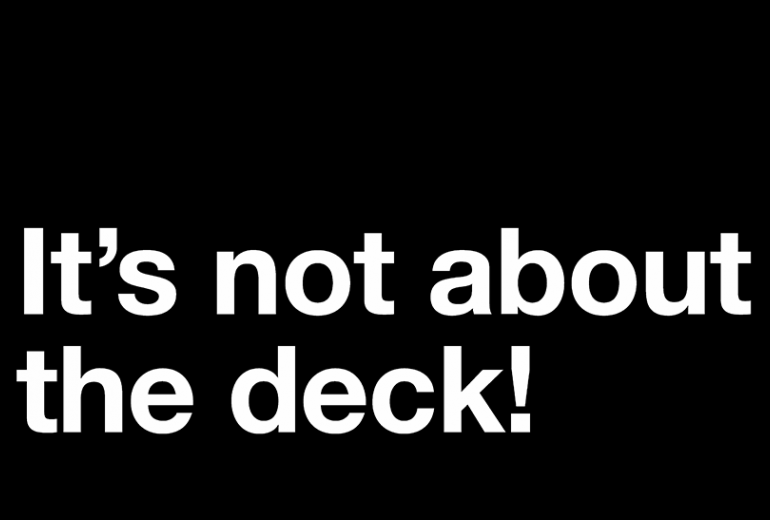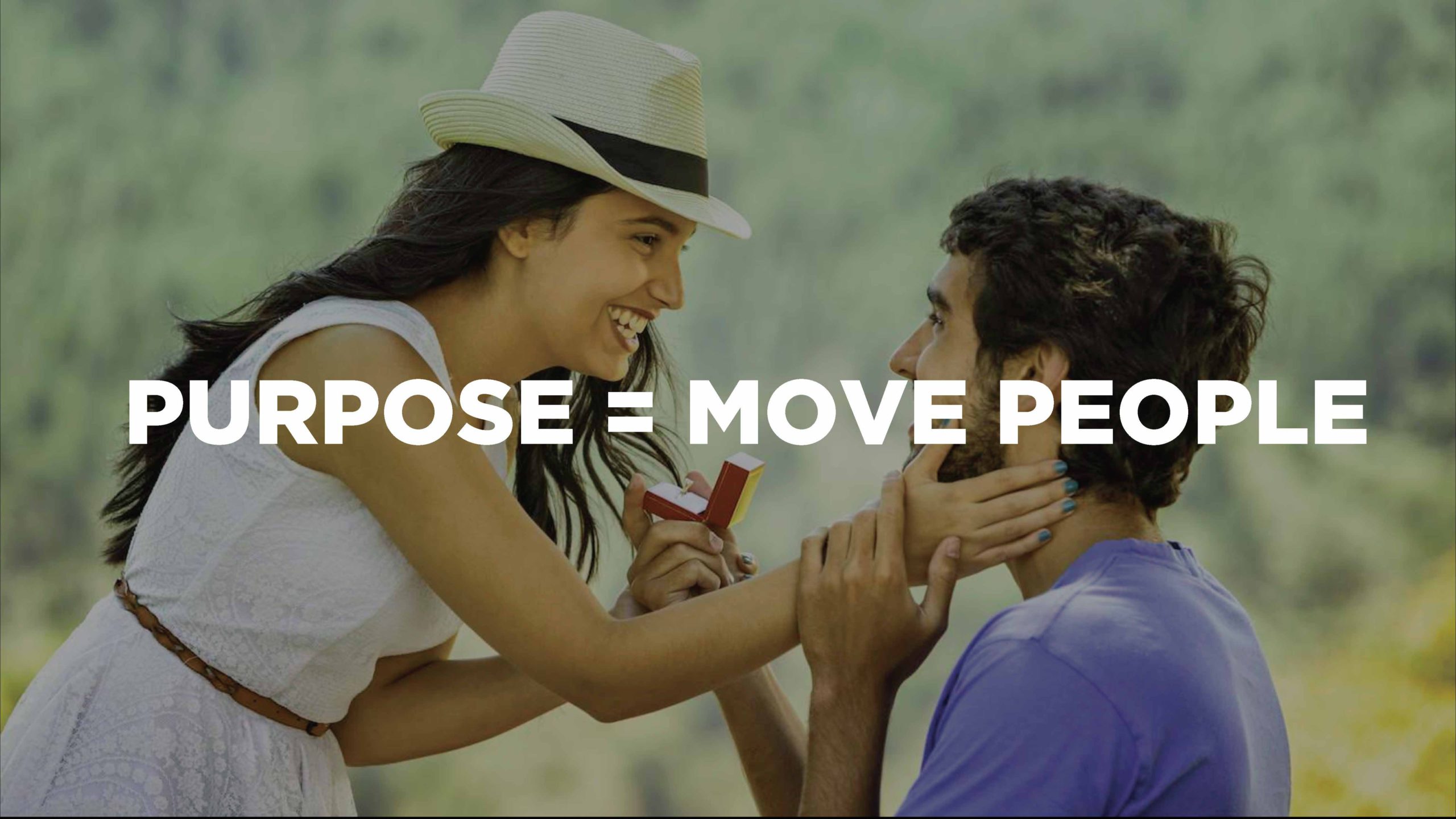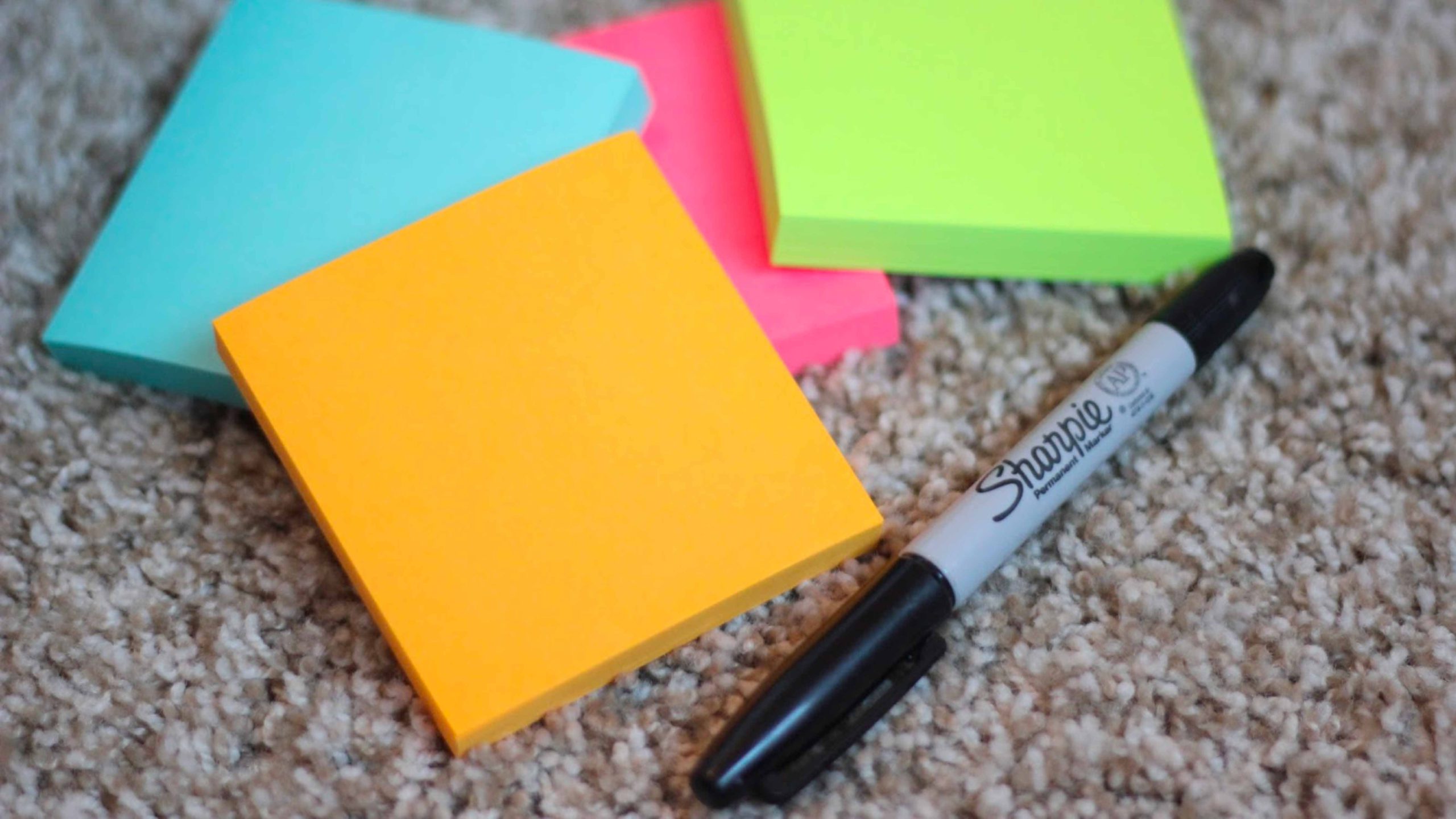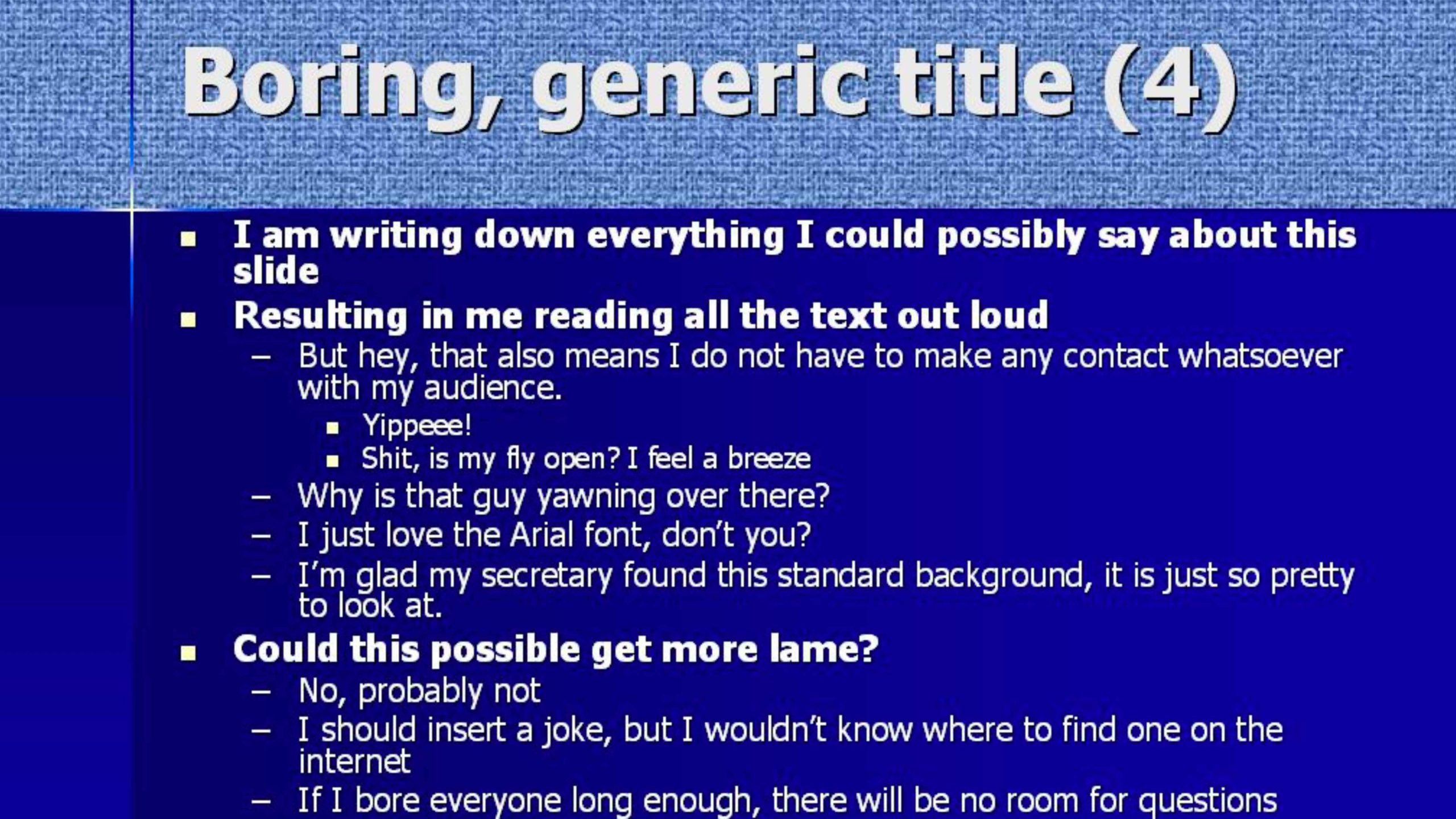Advent Culture
College Sports Facilities
Design
Digital Experiences
Pro Sports Facilities
Recruiting
Presentations That Move People—And Get You Noticed

When we give a presentation, we have to remember that the presentation is not the outcome. The outcome is something different. Much like a drill bit—no one buys a quarter inch drill bit because they want a quarter inch drill bit. They buy a quarter inch drill bit because they want a quarter inch hole. The drill bit is the tool to get the outcome, which is the hole.
 The purpose of presentations most commonly is persuasion. We’re trying to persuade an audience. We’re trying to connect emotionally with them. And we want to move people in order to get them to act. It’s easy to lose sight of that purpose.
The purpose of presentations most commonly is persuasion. We’re trying to persuade an audience. We’re trying to connect emotionally with them. And we want to move people in order to get them to act. It’s easy to lose sight of that purpose.
Why do presentations lose their way?
First I would offer that we just get afraid. Fear is an incredible motivator, and when fear sets in, it really locks us. It causes us to do strange behaviors. And one of those strange behaviors is we set the bar too low. We look out there at other people’s presentations and we try to just play to the average. We aspire to be mediocre. And that’s further fueled by the reality, when we open up PowerPoint, we’re given all these templates. And, even at the bottom of the screen, it says, “create.” And we decide we will invest our energy in creating the slides. That creativity sometimes is misaligned with what our objective or outcome is for the presentation. And what happens is we just kill the audience with all of these boring bullet points. I would just offer to you at the end of the day, it’s really not about the deck. It’s about your audience, it’s about your audience and the way you connect with them emotionally.
 How you can more effectively persuade?
How you can more effectively persuade?
So I want to ask yourself five questions when you go to think about a presentation.
First, “What do you want the audience to do?” There’s always an objective—how we’re trying to move the audience, how we’re trying to get them to act. My background in training and research is all in customer behavior, trying to get customers through a series of events to act and do something. The question you have to ask before you start a presentation is what do you want the audience to do?
Second, “What do you know about your audience?”Audiences are trying to tell a story about themselves. We all are. It’s really important to us to identify with a certain brand or certain stories or certain narratives. Your audience is no different. They’re trying to tell a story about themselves and what you need to do is tap into that story.
Third, “How can you bring the emotion?” Researchers, including the famous researcher at the University of Southern California, Antonio Damasio said in his book, “Descartes’ Error,” the way we make decisions are both with the rational side of the brain and with the emotional side of the brain. And in Dr. Damasio’s research, he studied patients who had had a traumatic brain injury. In fact, the emotional quadrant of their brain had been somehow disabled through this traumatic injury. And what he found was people who had no ability to function emotionally with their brain could not make a rational decision. Research shows us that emotion is what pushes us over the edge. So I want you to imagine for a moment, as you’re approaching your presentation, two concentric circles, one is data—rational. The other is emotion, and you have to bring them both because people decide with their emotions and they justify their decision with rational data and data points.
Fourth, “How can you differentiate yourself?” Differentiation adds value. Let’s just imagine for a moment that I wanted to really impress my wife in COVID times, and I wanted to bring her a lovely gift. If I walked in the door and said, “Honey, I brought you this beautiful gift. And it’s here in this Target bag and I’m really excited.” Well, that’s one way to get her attention. But there’s another way that I could approach that. I could, instead, walk in the door with a Tiffany’s bag.
What we all know intuitively is that packaging and the way we present differentiates the content we’re trying to bring to life. Differentiation adds value and it enables choice, and it’s at the heart of great brand marketing.
Finally, “What’s the path that you want to take your audience on?” How do you want your audience to engage with you? What do you want them to do? How do you want them to feel? And as you think about that path, think about stories. As you bring the emotion, that path needs to have some twist and turns to it that are hinged on effective storytelling. Chip and Dan Heath, who’ve written many books on social science, believe that stories are what makes the points that we are trying to get across stick. They talk about the fact that stories are the moments that bring to life our connection with a brand, with an initiative, with a pitch.
Creating the presentation.

Now, how do you approach the actual presentation itself? Don’t grab your computer. Don’t grab your computer. Don’t grab your computer. When Bill Gates and his team at Microsoft founded that iconic product, PowerPoint, they never intended for it to lead our presentations. It’s meant to be the tool that reflects our presentations, but we’ve turned it into the way we compose or create our presentations. And it’s just so wrong. It makes us look like everyone else.
Instead, I want you to start with sticky notes and a Sharpie. Instead of thinking about slides, I want you to think about what goes on those sticky notes. I want you to think about what you want the audience to feel and what do you want them to do? What do we know about the audience? What are some points that you really want to get across that are critical in connecting with the audience? Write each of those on a different sticky note. Stick the notes on the wall behind you or on your desk or on a conference table. Maybe you’re collaborating with someone else in your department or someone on the outside; hand them a sticky pad and Sharpie and help them collaborate with you.
What you find is incredible freedom. When you start in that organic fashion, one idea per sticky note, thinking about what you want to communicate, you begin to create the stories that will bring those points to life? What’s the flow of those sticky notes? How do we make the leap from sticky notes to slides?
Now open the computer.
Now you open your computer. It’s just helpful to use a word processing software. The outline in a Google doc, especially for collaboration with other people, allows us to think about the process of what we want to communicate. We think about putting our ideas in an outline.
It’s not our script, but it’s just the outline of the ideas. Then we think about what slides we need to bring those to life. Part of what you’re trying to do with imagery is to allow the imagery to take you somewhere. It is the color commentary on the journey you’re trying to take your audience on and it should not be distracting with a bunch of bullet points or words. It’s the imagery that lets you take in and breathe in what you are trying to present to the audience.
 A lot of research says that if you put those bullet points up, it creates a lot of tension, a lot of resistance in the brain because they’re trying to read ahead as they’re trying to listen to you. Use full bleed images, no borders, no background to punctuate the narration that you’re giving. Another thing that we suggest is one idea per slide. One idea at a time allows you to slow down your cadence, connect with your audience in a more engaging way, and take them on this journey. They’re excited and anticipating the next image that you’re going to show.
A lot of research says that if you put those bullet points up, it creates a lot of tension, a lot of resistance in the brain because they’re trying to read ahead as they’re trying to listen to you. Use full bleed images, no borders, no background to punctuate the narration that you’re giving. Another thing that we suggest is one idea per slide. One idea at a time allows you to slow down your cadence, connect with your audience in a more engaging way, and take them on this journey. They’re excited and anticipating the next image that you’re going to show.
Don’t use a bunch of logos on a slide. Stop it. You look like Ricky Bobby’s uniform. Stop it. Put the mouse down. You’re overstimulating the audience. It’s fatiguing them.
The other thing is stop using those templates.
Think of it more as a film that you’re bringing to life with the narration. Use a black slide to give the audience a visual break. When I do that, it allows the audience to focus attention on me. Normally that black side is meant to kind of fade away. We put them in the presentation deck as a way to pace.
The icing on the cake—delivery.
So now I want you to think about delivery. Standing, not sitting, gives me energy, and allows me to pulse my legs and feet and allows me more energy in the way I’m conveying to you.
I’m also conscious of the fact that I’m having some highs and lows in the modulation of my voice. So if I really want to tell you a compelling story, I’ll take down the volume and the animation. And if I really want to be excited, I’ll be more vibrant in the emotion and the modulation of my voice. I’ll do so with punctuation of my hand gestures. Even if you’re delivering remotely, I want you to think about how do you get that emotion in there. Sometimes you do it with story. Sometimes you do it with the energy that you have. You’re certainly doing it with trying to understand the emotion of the audience and what they care about.